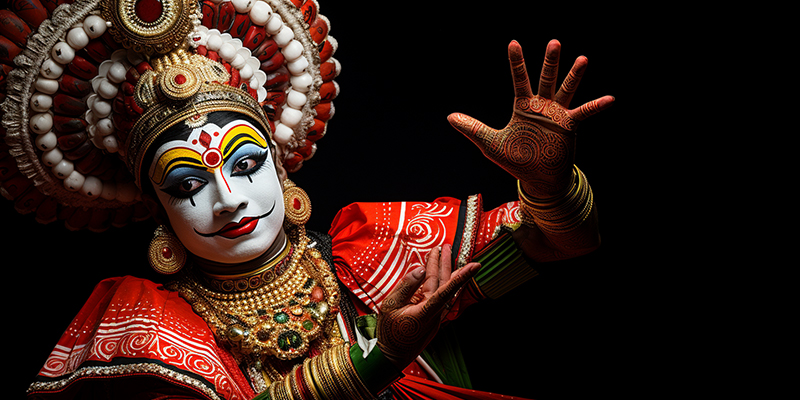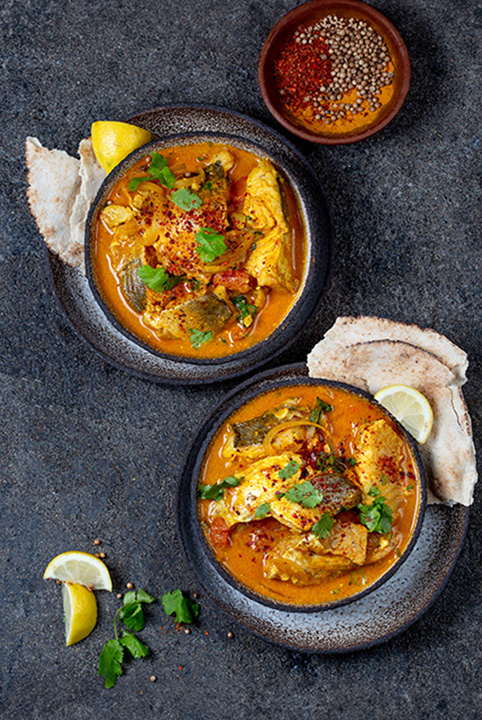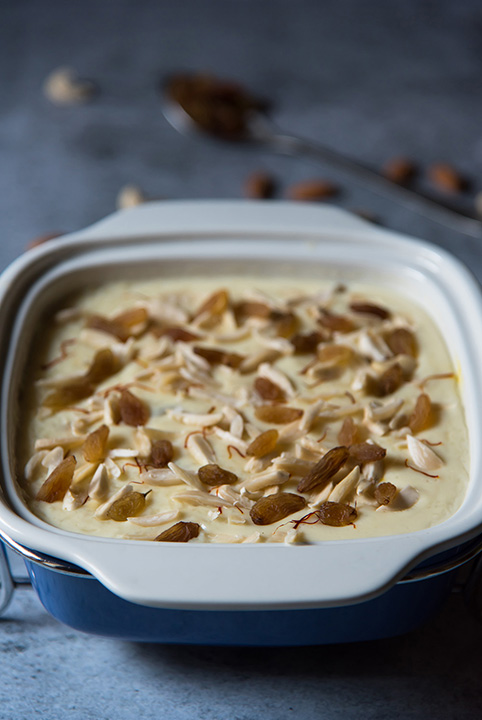Kerala Culture and Traditions
Kerala Culture and Traditions
How to Plan Your Perfect Trip to Kerala!

Kerala, often lovingly referred to as ‘God’s Own Country’, is a state in southern India. It is renowned for its breathtakingly green landscapes sprawling in all directions, peaceful backwaters that reflect the skies, and a culture that has thrived and evolved over centuries. This coastal beauty boasts a rich tapestry of traditions, festivals, and art forms woven into the very fabric of life here.
In this article, we will take you on a journey through the chronicles of Kerala’s history, explore its diverse religious traditions, unearth the beauty of its unique arts and crafts, celebrate the spirit of its festivals, and relish the delicious cuisine that is an integral part of this fascinating state.
The History of Kerala
Kerala, situated on the Malabar coast of India, emerged as a state on November 1, 1956, through the enactment of the State Reorganization Act. This fusion, brought together the Malayalam-speaking regions of Cochin, Malabar, South Canara, and Travancore. Kerala ranks as the 21st largest state in India, bordering Karnataka, the Lakshadweep Sea, and Tamil Nadu. Its economy, boasting a GSDP of ₹8.5 trillion, stands at the 8th position in India. Interestingly, Kerala exhibits the lowest positive population growth rate in the country. The state’s extensive coastline spans 595 kilometres, sustaining a fishery industry that supports the livelihoods of approximately 1.1 million people, playing a vital role in the state’s economy.
During the British colonial era, significant events shaped Kerala’s history:
- In 1734, the East India Company acquired the island of Dharmadom near Kannur and Thalassery, establishing a factory and English settlements.
- In 1761, the British took over Mahe and then handed it over to the ruler of Kadathanadu. The French regained Mahe in 1763 as part of a treaty.
- In 1784, the British agreed to give back their Indian settlements to the French, restoring Mahe to the French in 1785.
- In 1757, the Palakkad Raja sought assistance from Hyder Ali of Mysore to repel an invasion by the Zamorin of Kozhikode. In 1766, Hyder Ali emerged victorious over Zamorin Kozhikode.
- They consolidated the smaller provinces and princely states under the rule of Mysore’s leader and, subsequently, Tipu Sultan, who waged campaigns against the British East India Company, leading to four Anglo-Mysore wars.
- By the late 18th century, Kerala came under British control, although the British initially faced local resistance.
Following India’s Independence, the nation underwent partitioning into India, Pakistan, Travancore, and Kochi. In November 1956, the taluk of Kasargod in the South Canara district of Madras, along with the Malabar district of Madras and Travancore Cochin (excluding four southern taluks and Senogottai taluk), amalgamated to form the state of Kerala under the State Reorganization Act. The inaugural elections for the new Kerala Legislative Assembly culminated in creating a government led by E. M. S. Namboodiripad, representing the Communist Party, and this marked a significant political shift in the region.
The history of Kerala, intertwined with colonial influences and political transformations, lays the foundation for understanding the state’s rich and diverse cultural tapestry, encompassing festivals, arts, and culinary traditions that flourish today.
The Major Religions in Kerala
In Kerala, Hinduism is the most widely practised religion, followed by over half of the population. Hindus believe in various gods and goddesses, with Brahma, Vishnu, and Maheshwara (Siva) being the most significant. They have sacred writings like the Vedas and Upanishads that guide how they should live their lives. Temples play a central role in Hindu worship, with daily rituals performed by priests.
The caste system, which determines people’s way of life and often their jobs, emerged with the arrival of the Aryans. While most Hindu temples were historically limited to specific castes, in 1936, Travancore opened its temples to all worshippers, regardless of caste. However, most temples, including the important Sabarimala Temple, still prohibit non-Hindus.
Christianity also has deep roots in Kerala, with St. Thomas considered the founder of Christianity in India. He arrived in 52 A.D. and converted both Jews and Brahmin families. Over time, European missionaries further spread Christianity, particularly among the marginalized communities. Today, Christians make up about 19% of Kerala’s population.
The Christian community in Kerala is diverse, with various branches like the Latin-Catholic Church, Syro-Malabar Catholic Church, and others. These churches have contributed significantly to the state’s education, healthcare, and social welfare.
The Christian community in Kerala is diverse, with various branches like the Latin-Catholic Church, Syro-Malabar Catholic Church, and others. These churches have contributed significantly to the state’s education, healthcare, and social welfare.
Kerala also has a small Jewish population, with an ancient synagogue in Kochi dating back to 1568. Additionally, many Jains, Sikhs, and Buddhists reside in the state. Despite this religious diversity, Kerala is known for its long-standing tradition of religious harmony and mutual respect.


The Traditional Arts and Crafts of Kerala
Kerala’s artistic heritage showcases intricate craftsmanship and attention to detail. Some traditional art forms flourish in the region, such as:
Kathakali:
This highly stylized form of classical dance-drama combines vibrant costumes, elaborate makeup, and powerful storytelling. It often depicts scenes from Indian epics like the Ramayana and Mahabharata.
Mohiniyattam:
Known as the “Dance of the Enchantress,” women perform this graceful dance form and embody a blend of expressive movements and lyrical gestures.
Kalaripayattu:
Often hailed as the world’s oldest martial art, Kalaripayattu encompasses rigorous physical training, weaponry, and healing techniques. It has influenced many other martial arts worldwide.
Mural Painting:
Kerala is renowned for its exquisite temple murals that narrate mythological stories through vivid and intricate paintings.
Handicrafts:
Skilled artisans craft intricate items like coconut shell crafts, bell metal products, and coir products that reflect the state’s rich cultural heritage.
The Festivals of Kerala
Exploring the Backwaters of Kerala is a complete experience.
Onam:
People often dub Onam the “Festival of Harvest” and celebrate it with grandeur and enthusiasm. It marks the return of the mythical King Mahabali and features colourful flower carpets, traditional feasts (Onasadya), and spirited boat races (Vallamkali).
Thrissur Pooram:
This electrifying temple festival held in Thrissur is a grand spectacle of processions, caparisoned elephants, and mesmerizing percussion performances
Vishu:
Vishu signifies the beginning of the Malayalam New Year, and people celebrate it fervently. The highlight is the Vishukkani, where people arrange auspicious items to see first thing in the morning.
The Cuisine of Kerala
Kerala’s culinary landscape is a testament to the state’s diverse cultural influences. With its generous use of coconut, spices, and rice, Keralite cuisine offers a delectable array of flavours. Signature dishes include:
Kerala, a South Indian state, boasts a diverse culinary tradition. Here are some standout dishes:
Puttu and Kadala Curry:
A typical breakfast, Puttu is a steamed rice cake with grated coconut. It’s typically paired with Kadala Curry, a dish of black chickpeas cooked with shallots, spices, and coconut milk.
Appam with Stew:
Appam, a thin pancake made from fermented rice flour and coconut milk, is served with Ishtu or stew. This stew, influenced by European cuisine, contains coconut milk, cinnamon, cloves, and shallots. It can feature various ingredients like mango, vegetables, or meats.
Karimeen Pollichathu (Fish):
A traditional delicacy, it involves marinating pearl spot fish in a mix of lemon juice, red chillies, and other spices, then wrapping and baking it in plantain leaves for a unique flavour.
Malabar Parotta with Kerala Beef Curry:
People make Parotta, a layered flatbread, from plain flour, egg, and ghee. They enjoy it with a curry of beef that they simmer with tomatoes, onions, garlic, and an array of spices.
Erissery (Pumpkin and Lentil Curry):
This popular curry features boiled pumpkin, raw plantains or yams, lentils, grated coconut, and various spices. People commonly serve it on a bed of rice during religious festivals.
Palada Payasam (Dessert):
A sweet rice kheer made with rice ada, milk, sugar, and ghee, it’s a delicacy during festivals like Onam.
Kerala Prawn Curry (Chemmeen Curry):
A signature dish from the Malabar region, it blends fenugreek, black mustard, fennel seeds, coconut milk, and green chillies for a tangy, spicy flavour.
Thalassery Biryani:
A fragrant biryani unique to Kerala, it features a particular rice variety named kaima, layered with meat and masala, then slow-cooked with a sealed lid.
Fish Moilee:
This famous Keralan fish stew combines coconut milk, turmeric, pepper, and various spices for a tangy taste.
Banana Fritters (Pazham Pori or Ethakka Appam):
Ripe bananas are coated with plain flour and deep-fried, serving as a traditional tea-time snack.
Conclusion
Ripe bananas are coated with plain flour and deep-fried, serving as a traditional tea-time snack.
Food Hours
Breakfast : 07:30 - 10:00
Lunch : 12:30 - 15:00
Dinner : 18:30 - 2:00
- The Mayflower Villa
- support@themayflowervilla.com

